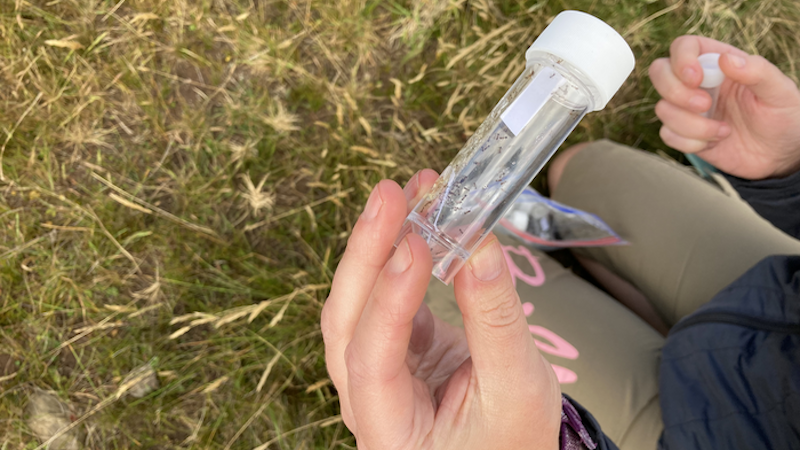
- Select a language for the TTS:
- UK English Female
- UK English Male
- US English Female
- US English Male
- Australian Female
- Australian Male
- Language selected: (auto detect) - EN
Play all audios:
ABSTRACT VOL: 99, ISSUE: 13, PAGE NO: 48 Mark Collier, BA, RGN, ONC, RCNT, RNT, is lead nurse consultant, tissue viability, United Lincolnshire Hospitals NHS Trust Accurate wound assessment
is essential to the appropriate and realistic planning of goals and interventions for patients with wounds. However, the assessment process has a number of components that must be
systematically considered. The process of wound assessment requires a range of skills and knowledge including: - Knowledge of relevant anatomy and physiology; - The ability to identify
factors that may interfere with normal wound healing; - The ability to collect objective and subjective data; - The ability to analyse and interpret the information that has been gained; -
The ability to identify the patient’s problems and needs through discussion. COMPONENTS OF THE ASSESSMENT PROCESS When assessing a patient with a wound, four questions need to be considered:
- What is the aetiology and location of the wound? - How should the wound be graded using an objective grading tool? - Based on the wound grading, what is the primary treatment objective? -
What regimen is required to achieve the identified treatment objectives (Collier, 2000)? The following 10-point guide provides a systematic approach to wound assessment. 1. CLASSIFICATION
OF THE WOUND Although there are many types of wound, there are four main groups: - Mechanical - for example surgical and traumatic wounds (Fig 1); - Chronic - for example leg ulcers and
pressure ulcers (Fig 2); - Burns, chemical or thermal injuries - these may be further classified by depth of injury (Fig 3); - Malignant - primary lesions such as melanomas (Fig 4).
Initially all wounds can be described as acute and are anticipated to progress through a normal wound-healing process. However, if they become fixed in one of the major phases of healing
(inflammation, regeneration or maturation) for a prolonged period - for example more than six weeks, the wound can be described as chronic. 2. INFORMATION THAT ASSISTS WOUND ASSESSMENT The
assessment process should be holistic, systematic and evidence based. Some authors have suggested basing assessment on existing nursing models (Bale and Jones, 1997; Collier, 1994). The
assessment framework described in this article should help you identify factors in three areas that may delay wound healing - general health, wound management and the local wound
environment. General health includes: age; social and care environments; psychological perspectives; nutrition; medical diagnosis and associated disease processes; medical interventions -
for example drug therapy and history of the wound. 3. INFORMATION REQUIRED TO ASSESS A WOUND The assessment process, which can be assisted by the use of a wound-assessment tool, should help
identify: - The number and location of wounds; - The grade of the wound/s - colour and/or numerical grading tools may be used (Collier, 1994); - The size of the wound - dimensions (length
and breadth) can be measured using a plastic ruler - which should be disinfected - or approximated from a tracing on a proprietary measuring grid; - The nature of any wound fluid - is it
exudate, serous fluid or pus? - The cause, nature and severity of any pain related to the wound. There are many causes of wound pain, which may be determined using a pain assessment scale
(Hollinworth and Collier, 2000). 4. ADDITIONAL TECHNIQUES THAT CAN INFORM THE ASSESSMENT PROCESS The use of technology can often help to clarify both the aetiology and extent - which is
often not visible - of a wound being assessed. To assist with the differential diagnosis of leg ulcers the following may be incorporated into the assessment: - Doppler ultrasound; - Duplex
scanning; - Photoplethysmography (PPG). The following may assist with assessing the extent of pressure ulcers, sinuses and dehisced wounds: - Colour Doppler ultrasound; - Sinography; - Other
investigations such as computerised tomography (CT) or magnetic resonance imaging (MRI). Computer-based assessment systems can be used to assist with the objective measurement of all wound
types, as they can assess maximum dimensions of the wound plus depth and volume and are non-invasive. 5. ASSESSMENT OF THE SURROUNDING SKIN Assessment should identify whether the skin is
erythematous, excoriated, indurated or macerated. - Erythema - redness of the skin as a result of a hyperaemic response - can be due to the presence of micro-organisms within the local
tissues, which are not multiplying (colonisation), or micro-organisms, which are multiplying and causing an additional host reaction, for example a change in the amount/nature of wound fluid
as a result of infection; - Excoriation - stripping of the upper layers of the epidermis as a result of prolonged exposure to toxins on the surface of the skin - can occur when there is
excessive wound fluid; - Induration - a change in the texture rather than colour of the skin - it becomes hardened and less supple; - Maceration - excessive moisture in the skin resulting in
the tissues becoming waterlogged. 6. IDENTIFY PRIMARY TREATMENT OBJECTIVES These depend on the signs and symptoms identified in the assessment. Typical objectives may include: - Wound
cleansing - does the wound need to be cleansed and if so, with what? It is generally accepted that wounds should be cleansed with normal saline, with the exception of some chronic wounds.
Routine cleansing is not recommended for clean wounds; - Debridement/desloughing can be achieved using a number of methods including mechanical, for example, sharp debridement; autolytic,
for example rehydration of the tissues; enzymatic; or biosurgery (larval therapy); - Control of exudate; - Control of bleeding; - Minimising the effects of infection. The objectives may
involve more than one of the above. However, in all cases the prime objective should be to optimise the patient’s healing potential. 7. INTERVENTIONS TO ACHIEVE THE PLANNED OUTCOME
Interventions can include the use of: - Interactive wound management materials - these include alginates, enzymes, foams, films, hydrocolloids, hydrofibres and hydrogels that help to create
or maintain the optimum healing environment (Collier, 1996); - Active wound management materials - these incorporate growth factors such as epidermal growth factor (EGF) or platelet-derived
growth factor (PDGF) that stimulate the healing environment; - New technologies such as hyperbaric oxygen therapy, low level laser therapy and topical negative pressure; - Complementary
therapies (it is important to understand the rationale for the use of these). Once the primary treatment objective has been achieved, assessment should be repeated to identify the next
objective and so on until wound closure. 8. DOCUMENTATION This is essential, both as a record of best practice at the time it was written and as a vital communication tool that should be
accessible to all professionals involved in the management of the patient’s wound. All components of the assessment process should be documented using unambiguous terminology. The use of
formal wound assessment charts may be helpful as they can focus the assessment process. There are many examples of these. 9. PHOTOGRAPHIC RECORDS Before any photographic record is obtained,
it is important to identify its purpose. It could be argued that if the answer to all of the following questions is ‘no’, then photography is unnecessary: - Is it for record-keeping,
highlighting the anticipated progress of wound healing? - Is it for inclusion in a case report file because the patient has been recruited into a clinical evaluation or research trial? - Is
it for historical archiving because the wound is rare or unique in nature? 10. PATIENT INFORMATION All patients are individuals and will require different information during and after the
process of assessing and managing the wound. This should be presented in an accessible form. CONCLUSION Wound assessment is a vital and dynamic process that can help to ensure that patients
receive the most appropriate evidence-based interventions available. Following this 10-point plan should enable you to have a positive impact and assist your patients to achieve their
desired outcomes.








